
Avoid These Common Node.js Backend Development Mistakes
Introduce the significance of Node.js in backend development and how its popularity has led to an array of common mistakes that developers might overlook.
Dev Orbit
June 23, 2025
Node.js has revolutionized backend development by enabling efficient, scalable, and high-performance applications with its non-blocking I/O and event-driven architecture. However, its widespread adoption has also led many developers to unintentionally fall prey to common pitfalls—from improper error handling to inefficient coding patterns. In this piece, we explore these frequent mistakes and discuss best practices that can elevate your Node.js backend development, ensuring your applications remain robust and performant.
1. Ignoring Asynchronous Nature
Explain the misconception of Node.js as a purely synchronous platform and highlight the importance of handling asynchronous operations correctly, emphasizing the use of callbacks, Promises, or async/await for better code execution flow.
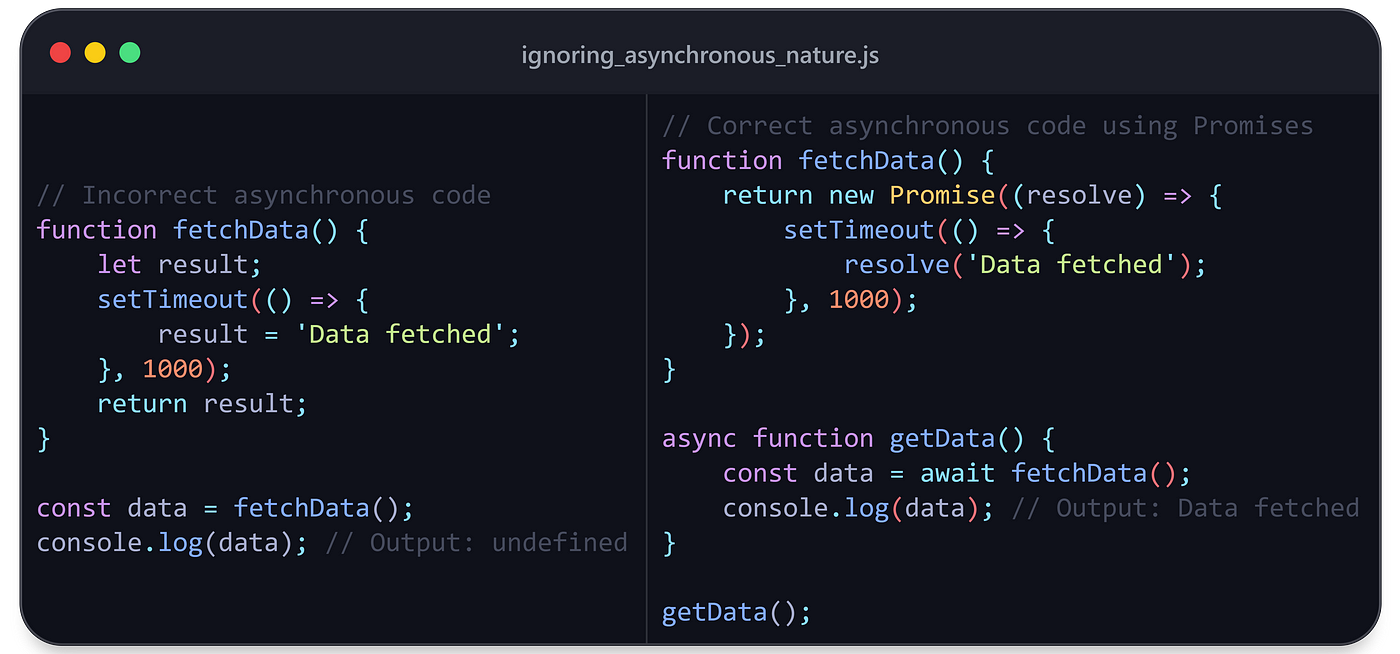
Use callbacks, Promises, or async/await to handle asynchronous operations correctly.
2. Not Optimizing Error Handling
Discuss the oversight of error handling practices, such as not properly handling exceptions or neglecting error-first callbacks, and showcase the impact it can have on code stability and maintainability.
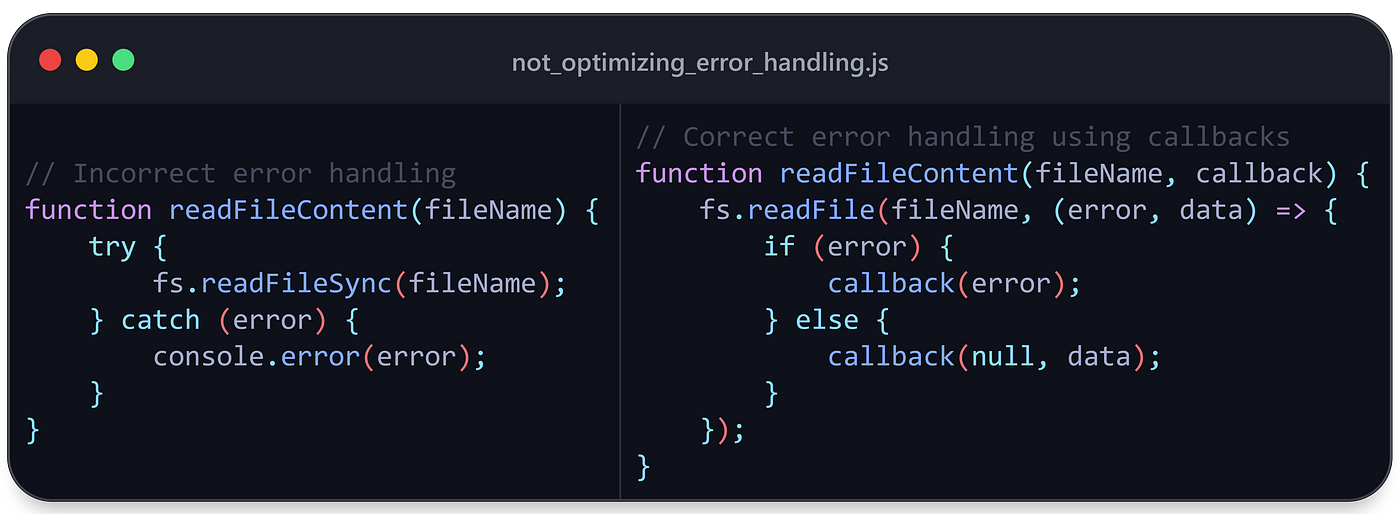
Handle errors explicitly and use error-first callbacks or Promises.
3. Overlooking Memory Leaks
Explain the risk of memory leaks in Node.js applications due to improper handling of references or continuous data accumulation, and suggest strategies like using memory profiling tools or adopting best practices to mitigate these leaks.
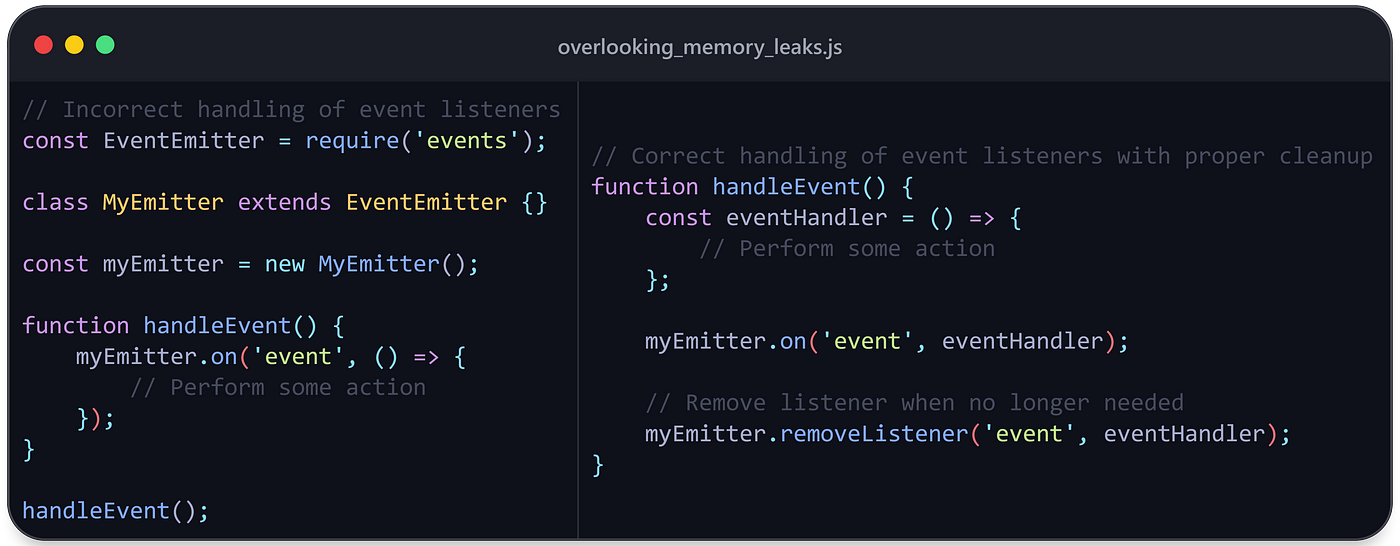
Properly manage event listeners to avoid memory leaks.
4. Poor Scalability Planning
Highlight the mistake of not considering scalability early in the development process, leading to challenges when the application needs to handle larger loads. Emphasize the importance of designing for scalability from the start.
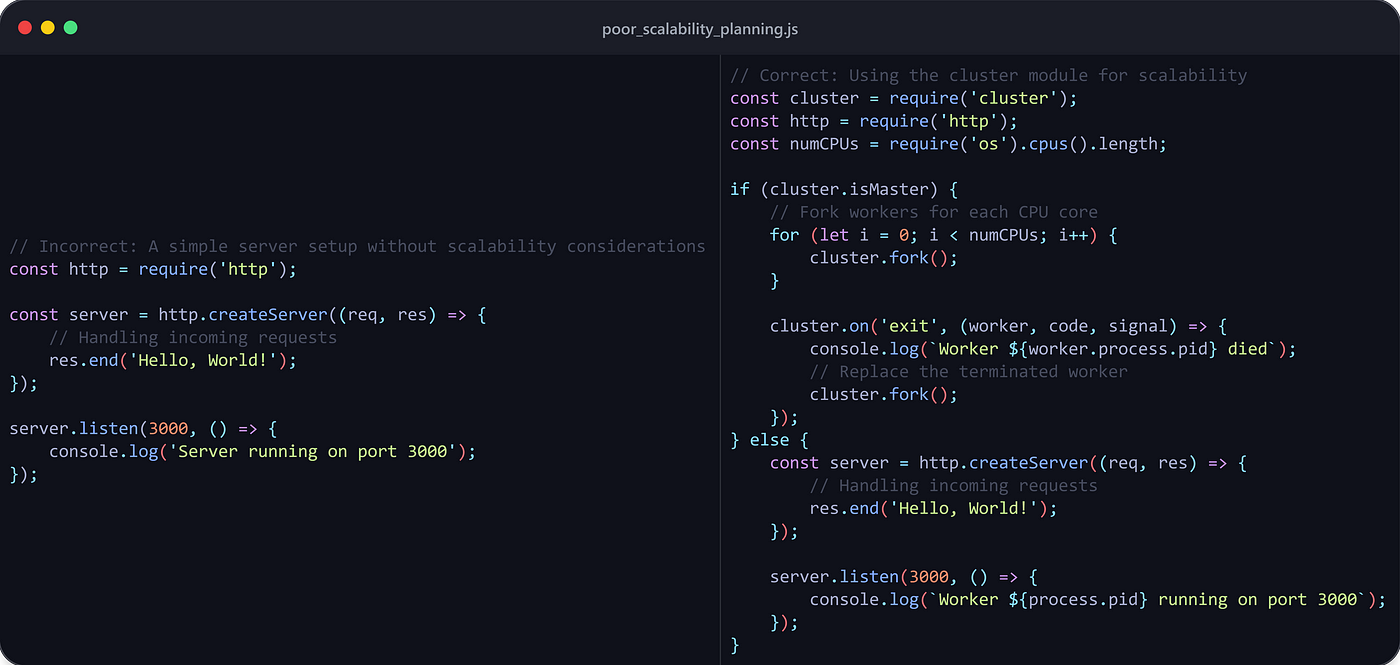
Implement a scalable architecture using a cluster module to take advantage of multiple CPU cores.
5. Lack of Security Measures
Discuss the oversight of security concerns, such as not sanitizing user inputs, not implementing proper authentication/authorization mechanisms, or neglecting secure coding practices, and recommend robust security practices.

Use proper encryption techniques and consider additional security measures.
6. Not Utilizing Caching Mechanisms
Explain the benefits of caching and how neglecting it can lead to reduced performance. Showcase common mistakes in implementing caching or not considering cache invalidation strategies.

Implement caching mechanisms using specialized tools or libraries.
7. Overcomplicating Code Structure
Address the mistake of over-engineering solutions or creating unnecessarily complex code structures, which can hinder maintainability and readability.

Simplify code structure and maintain modularity for better maintainability.
8. Foregoing Testing and Documentation
Emphasize the necessity of thorough testing and comprehensive documentation. Explain how overlooking these practices can lead to more errors and confusion in the long run.
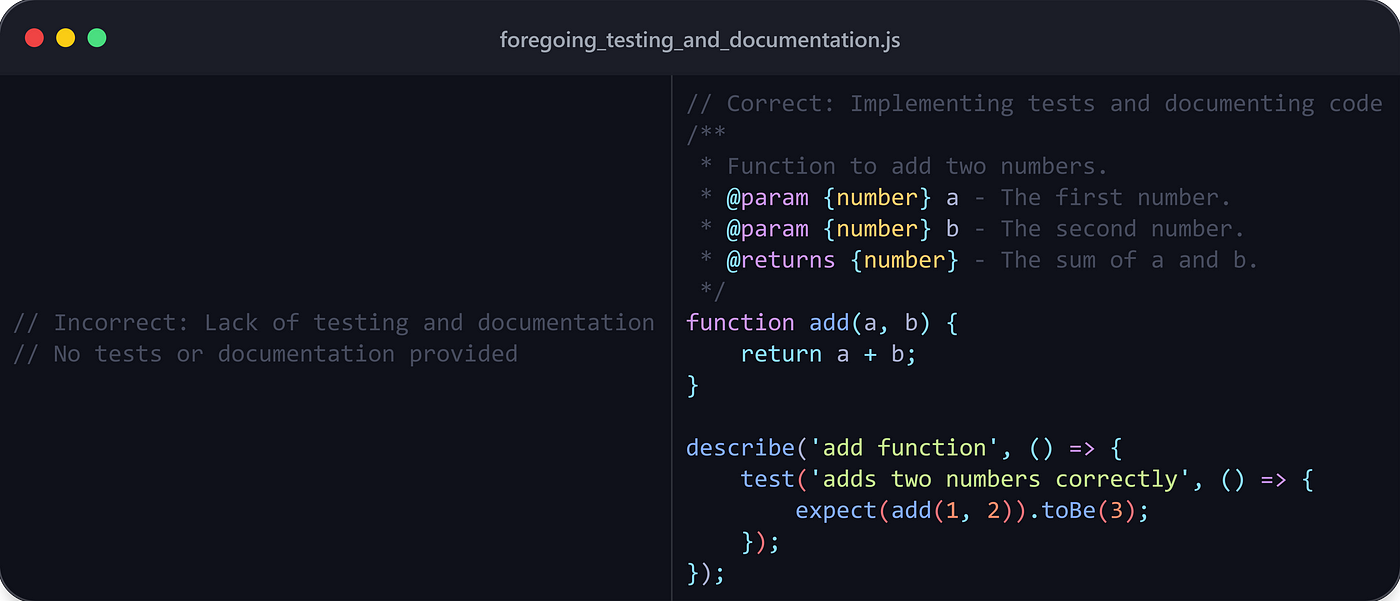
Embrace testing frameworks like Jest and document code using tools like JSDoc.
Conclusion
Summarize the importance of being aware of these common mistakes and provide encouragement for Node.js developers to continuously educate themselves to write more efficient, scalable, and secure backend code.

Enjoyed this article?
Subscribe to our newsletter and never miss out on new articles and updates.
More from Dev Orbit

NestJS Knex Example: Step-by-Step Guide to Building Scalable SQL Application
Are you trying to use Knex.js with NestJS but feeling lost? You're not alone. While NestJS is packed with modern features, integrating it with SQL query builders like Knex requires a bit of setup. This beginner-friendly guide walks you through how to connect Knex with NestJS from scratch, covering configuration, migrations, query examples, real-world use cases and best practices. Whether you're using PostgreSQL, MySQL or SQLite, this comprehensive tutorial will help you build powerful and scalable SQL-based applications using Knex and NestJS.

Unlocking WASI: The Future of Serverless with WebAssembly
Discover how WASI is transforming serverless computing with secure, portable WebAssembly runtimes for the cloud era.

Nexus Chat|与 Steve Yu 深入探讨 Nexus 生态系统
在这篇文章中,我们将深入探索 Nexus 生态系统,揭示它如何为未来的数字环境奠定基础,以及 Steve Yu 对这一范畴的深刻见解和前瞻性思考。

AI Is Reshaping Jobs — and That Could Hit You Hard
As artificial intelligence continues to evolve, its impact on the job market is growing more profound each day. In this article, we will explore how AI technologies like GPT-5 are transforming various industries, the potential risks for workers, and actionable steps to navigate this changing landscape. From automation to the creation of new job roles, we will offer insights that every professional should be aware of to remain competitive in the era of AI.

Tamron 16–30mm F/2.8 Di III VXD G2 for Sony E-Mount Listed for Pre-Order on Amazon US
Discover the latest offering in wide-angle photography with the Tamron 16–30mm F/2.8 Di III VXD G2 lens for Sony E-Mount, now available for pre-order on Amazon US. This article delves deep into its specifications, unique features and its potential impact on your photographic journey. From its advanced optical design to performance benchmarks, we’ll explore everything that makes this lens a must-have for both amateur and professional photographers.

Stop Writing Try/Catch Like This in Node.js
Why Overusing Try/Catch Blocks in Node.js Can Wreck Your Debugging, Performance, and Sanity — And What to Do Instead
Releted Blogs

Why Most People Waste Their AI Prompts ? How to Fix It...
In the current landscape of AI technology, many users struggle with crafting effective prompts. This article explores common pitfalls and offers actionable strategies to unlock the true potential of AI tools like GPT-5.

Handling File Uploads Using Multer In Node Js Express
Web developers must understand how to handle file uploads in the fast-changing world of web development. Multer in Node.js is a robust solution for this task. This article explores Multer features, installation process, advanced functionalities and best practices for seamless integration with Express.

9 Powerful Reasons Why NestJS Beats Other Backend Frameworks in 2025
NestJS is revolutionizing how developers approach backend development in 2025. With built-in TypeScript support, modular architecture and first-class microservices integration, it's more than just a framework—it's a complete platform for building enterprise-grade, scalable applications. Discover why NestJS outshines Express, Django, Laravel and other backend giants in this in-depth comparison.

Top AI Tools to Skyrocket Your Team’s Productivity in 2025
As we embrace a new era of technology, the reliance on Artificial Intelligence (AI) is becoming paramount for teams aiming for high productivity. This blog will dive into the top-tier AI tools anticipated for 2025, empowering your team to automate mundane tasks, streamline workflows, and unleash their creativity. Read on to discover how these innovations can revolutionize your workplace and maximize efficiency.

Deep Dive into Error Handling and Logging in Node.js
Mastering the essentials of error handling and logging in Node.js for more resilient backends.

10 Powerful Tips for Efficient Database Management: SQL and NoSQL Integration in Node.js
Streamline your Node.js backend by mastering the integration of SQL and NoSQL databases—these 10 practical tips will help you write cleaner, faster and more scalable data operations.
Have a story to tell?
Join our community of writers and share your insights with the world.
Start Writing